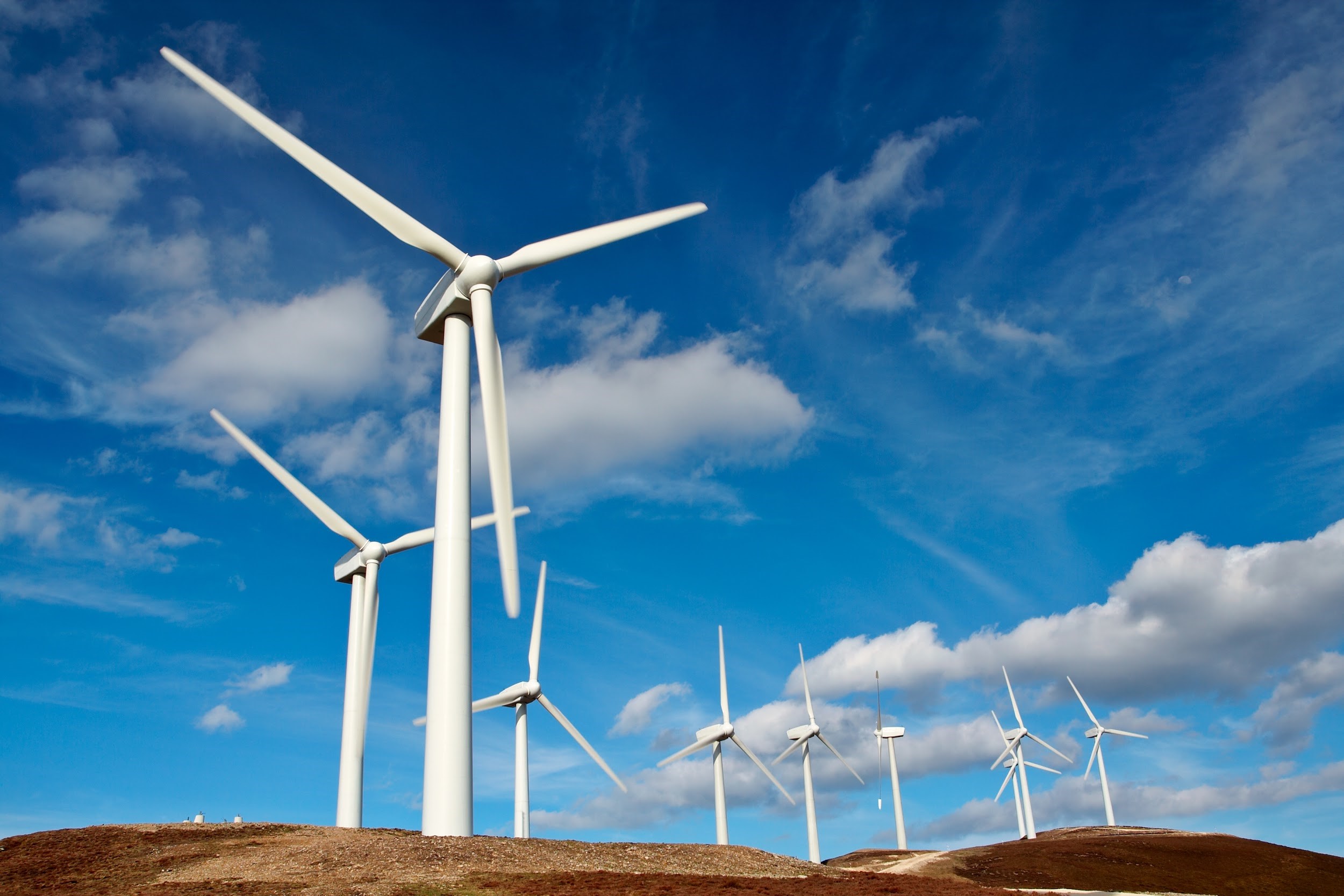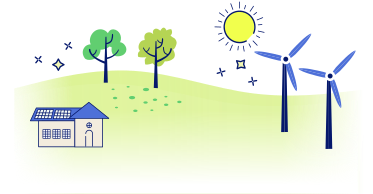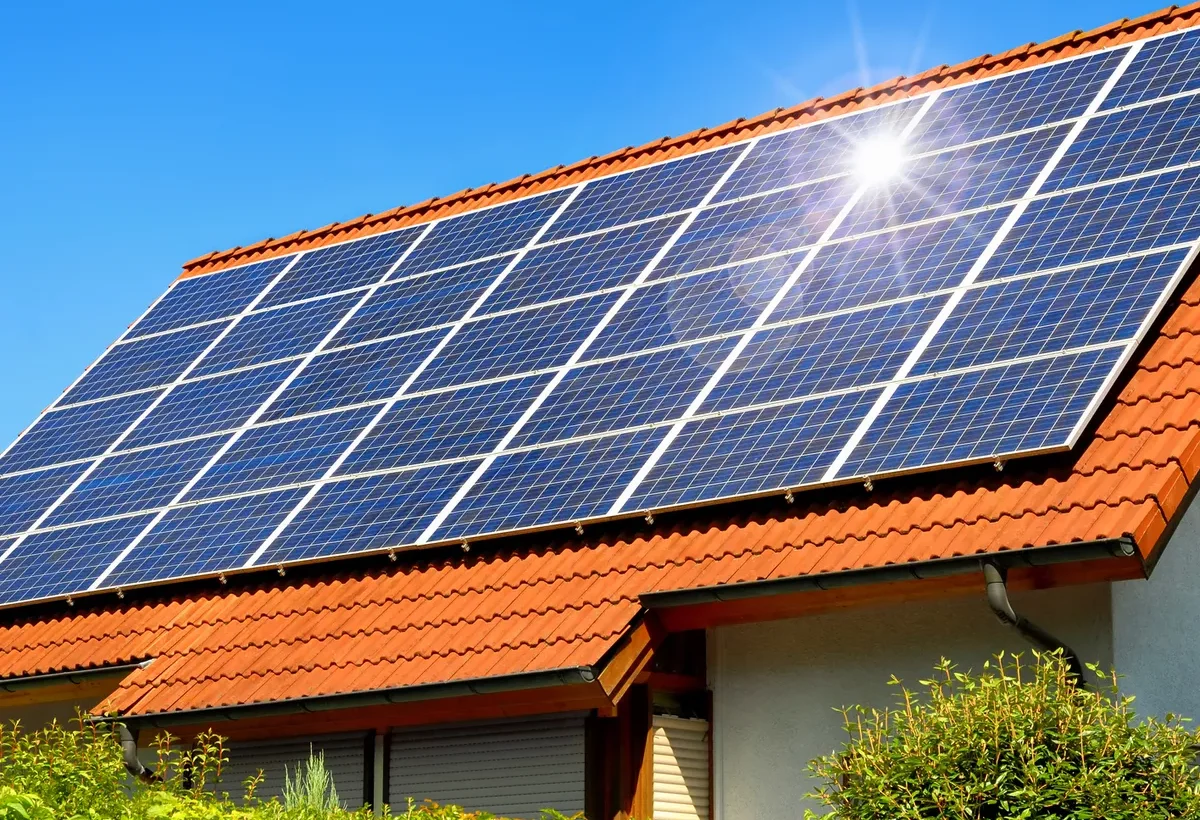This article is your complete guide to understanding renewable energy. Renewable energy is a rapidly growing sector in today’s world, driven by the need for sustainable and environmentally friendly power sources. As homeowners face increasing electric bills and concerns about climate change, many are turning to alternative energy options to meet their energy needs. In this article, we will explore the concept of renewable energy, its various sources, and the benefits it offers to homeowners and the planet.
Renewable energy is a type of energy that comes from a naturally occurring resource and can be replenished in a human timeframe. That means it technically never runs out! Which, potentially be a huge benefit to those looking to switch from traditional energy. So, if you want to learn more about renewable energy and the difference between fossil fuels, keep reading!
Here at The Energy Professor, we want to give you the information you need to save money on your energy bill and become more energy efficient. We hope find this post helpful! And makes it easier for you to know more about appliance energy usage. Be sure to also check out our one-of-a-kind energy savings calculator!
The Energy Professor Electricity Rate Check Tool
What is Renewable Energy?

Renewable energy, which is also known as clean energy, comes from natural resources that replenish faster than harvested, making them virtually inexhaustible. There are several categories of renewable energy sources, all depending on where the energy is harnessed from such as the sun, wind, water, or earth. This is different from traditional energy sources, like coal and oil, which are finite and contribute to global climate change. Renewable energy resources are considered sustainable and have minimal impact on the environment. Renewable energy is also considered green energy, which is
What is a renewable resource?
A renewable resource is a natural resource that can be regenerated at a faster rate than it is consumed. These resources can naturally restore themselves through biological, geological, or other natural processes. We often hear about renewable resources when talking about energy and how we can harness it to create electricity. Those are considered inorganic renewable resources, as they are derived from nonliving sources of natural processes.
What are the different renewable energy types?
- Solar Energy: Solar power harnesses the energy from the sun to generate electricity or heat. Photovoltaic (PV) systems convert sunlight directly into electricity, while solar thermal systems capture the sun’s heat to produce hot water or for space heating.
- Wind Energy: Wind turbines capture the kinetic energy from the wind and convert it into electricity. Wind power is a clean and abundant resource, particularly in regions with consistent wind patterns.
- Hydropower: Hydropower utilizes the energy of flowing or falling water to generate electricity. It is generated by dams, tidal barrages, or run-of-the-river systems, and is one of the oldest and most widely used renewable energy sources.
- Geothermal Energy: Geothermal energy utilizes the heat stored beneath the Earth’s surface to generate electricity or for direct use in heating and cooling systems. It involves tapping into natural geothermal reservoirs or using geothermal heat pumps to transfer heat from the ground.
- Biomass Energy: Biomass energy is derived from organic matter such as wood, crops, agricultural residues, and dedicated energy crops. It can be used to produce heat, electricity, or biofuels through processes like combustion, gasification, or anaerobic digestion.
Related post: What is Green Energy?
What is Renewable vs Non-Renewable Energy?

The difference between renewable and non-renewable resources are two different types of energy categorized by their availability and replenishment characteristics. For example, renewable resources such as solar, wind, hydro, geothermal, and biomass all are derived from sources that can be continuously renewed rather quickly. On the contrary, non-renewable resources such as coal, oil, and natural gas can take millions of years to be formed.
While renewable energy sources offer sustainability, minimal environmental impact, and the potential for long-term availability, non-renewable energy sources are associated with environmental concerns, finite supply, and their role in climate change. It’s crucial for reducing greenhouse gas emissions, combating climate change, and ensuring a sustainable energy future for our planet
Examples of renewable vs non-renewable resources
Renewable resource examples:
- Solar Energy: Energy derived from the sun through technologies like solar panels or solar thermal systems.
- Wind Energy: Energy harnessed from the wind through wind turbines.
- Hydropower: Energy generated from the movement of water, such as rivers, tides, or waves, using hydroelectric dams or turbines.
- Geothermal Energy: Heat energy obtained from the Earth’s internal heat through geothermal power plants or geothermal heat pumps.
- Biomass Energy: Energy derived from organic matter, including wood, crops, agricultural residues, and dedicated energy crops, through processes like combustion, gasification, or anaerobic digestion.
Non-renewable:
- Fossil Fuels: These include coal, oil, and natural gas, which are formed from the remains of ancient plants and animals over millions of years.
- Nuclear Energy: This is energy generated from nuclear reactions in power plants that use uranium or plutonium as fuel.
As you can see, the main difference between renewable and non-renewable resources is truly where they are derived from. The sun’s energy isn’t going to deplete anytime soon and continues to be available for us to use, hence why it’s renewable.
Related post: Why is Energy Conservation Important?
Renewable Energy FAQ

Q: Define renewable energy:
A: Renewable energy, also known as clean energy, comes from natural resources that replenish faster than they are consumed. It includes solar, wind, hydro, geothermal, and biomass energy sources. Unlike non-renewable sources like coal and oil, renewable energy is sustainable, has minimal environmental impact, and is considered “green energy.”
Q: What are the different kinds of renewable energy?
A: There are several types of renewable energy sources:
- Solar Energy: Capturing energy from the sun using solar panels or solar thermal systems.
- Wind Energy: Harnessing the kinetic energy of the wind with wind turbines.
- Hydropower: Utilizing the energy from flowing or falling water, often through dams or turbines.
- Geothermal Energy: Tapping into the Earth’s heat beneath the surface for electricity or heating/cooling systems.
- Biomass Energy: Deriving energy from organic matter like wood, crops, and agricultural residues through processes like combustion or anaerobic digestion.
Q: Is copper a renewable resource?
A: No, copper is not considered a renewable resource. Copper is a naturally occurring metal that is mined from the Earth’s crust. It is formed over geological timescales through various processes. While copper deposits can be found in different regions around the world, the rate at which new copper deposits are formed is extremely slow and cannot keep up with the current rate of copper consumption.
Do you Need Cheaper Electricity?
If you’ve taken the time to understand the information on your bill and discovered you’re paying more than you’d like for your electricity, have you looked around for a cheaper deal? The Energy Professor has a wealth of information on ways to save on your utilities, including details of top deals that could significantly reduce your monthly or quarterly electricity bills.
We hope you found this article helpful! If you are looking for ways to increase energy efficiency and sustainability in your home be sure to take a look at all of the latest renewable energy options in your area. The Energy Professor helps residential and small business owners find qualified energy suppliers in New York, New Jersey, Pennsylvania, Texas, Ohio, Maryland, Illinois, and Massachusetts


